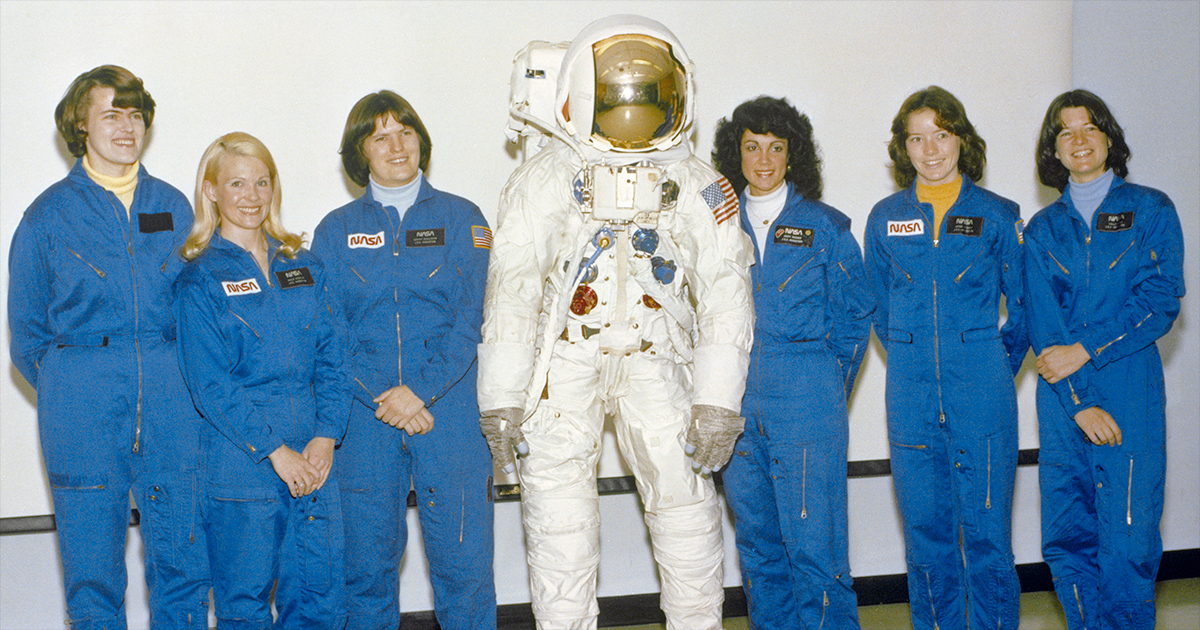Loren Grush, author of ‘The Six’, highlights the pioneering influence of the first female astronauts in selecting a lady to land on the moon
Forty-five years after NASA selected its first group of female astronauts, the agency now has 16 active female astronauts who are eligible to become the first woman to walk on the moon. In a recent interview with collectSPACE, Loren Grush, author of “The Six: The Untold Story of America’s First Women Astronauts,” discussed the diverse backgrounds and experiences of these trailblazing women.
Grush emphasizes that the original six women astronauts, just like their male counterparts from 60 years ago, did not need to possess a specific set of qualifications or “the right stuff” to be chosen. The group consisted of individuals with a wide range of backgrounds, including medical doctors, chemists, electrical engineers, astrophysicists, tennis players, and oceanographers. This diversity highlights the fact that there is no clear path to space, or in this case, to the moon.
In her book, Grush chronicles the lives and adventures of Anna Fisher, Rhea Seddon, Shannon Lucid, Judy Resnik, Sally Ride, and Kathy Sullivan. She explores not only their biographies but also the challenges they faced as members of the first group of female astronauts in a predominantly male profession. Grush believes that these women’s experiences can provide valuable insights as NASA considers narrowing down its current group of astronauts to select the first lady to step foot on the lunar surface.
When discussing the selection process for the first American woman to fly into space, Grush reveals that it was not as rigorous or objective as one might expect. Ultimately, Sally Ride was chosen based on George Abbey’s selection, with input from Bob Crippen, the commander of the mission Ride would be assigned to. The mission heavily focused on robotic arm operations, an area where Ride had expertise. Additionally, Ride’s ability to handle pressure and her background as a nationally-ranked tennis player played a role in her selection.
Grush is hesitant to choose a single astronaut from the original six as the perfect candidate for the first lady to walk on the moon. Each woman brought unique qualities to the table, and any one of them would have made a great choice. Grush praises Shannon Lucid for her perseverance and storied career at NASA, including her record-breaking time in space. She also highlights Judy Resnik, whose achievements sometimes get overshadowed by the focus on Christa McAuliffe, who was aboard the ill-fated Challenger mission.
When comparing the current group of female astronauts to the original six, Grush notes that they are still breaking barriers. The recent all-female spacewalk by Christina Koch and Jessica Meir exemplifies the progress that has been made. However, there is still work to be done to achieve equality in space exploration. The current astronauts benefit from the support and guidance of the women who came before them, making their path a bit easier.
As NASA aims to send the first lady to walk on the moon, Grush believes that the perfect candidate should be comfortable with public speaking and sharing their story. They will undoubtedly face intense media attention, much like Sally Ride did. However, Grush believes that the questions asked of the first lady on the moon will be more enlightened and respectful.
Grush hopes that when we do return to the moon, the first lady to fly or land there will pay tribute to the women who paved the way. She suggests honoring not only the women who have flown in space but also the a high number of female engineers and professionals who have contributed to the space program. Recognizing all women’s contributions would be a beautiful tribute to their impact on space exploration.
To wrap it up, the journey of the original six women astronauts serves as a testament to diversity and perseverance. Their stories inspire future generations of women to break barriers and pursue their dreams in male-dominated fields. As NASA prepares for its next historic milestone, selecting the first woman to walk on the moon, the lessons learned from these trailblazing women will undoubtedly shape the future of space exploration.
